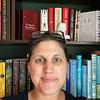Take a photo of a barcode or cover
informative
lighthearted
fast-paced
informative
lighthearted
fast-paced
To join the chorus of several others who have read this book, I liked the idea behind it, but the end product turned out to be....well, problematic, to say the least.
For me, one of the biggest issues is the enormous disconnect between its aggressive self-presentation as a history book about women who were anything but stereotypical princesses, and a lot of its actual content. It's a book that plainly states right in its title "Real Stories from History, yet in the very first section, several of the first women it covers are figures who are famous for exploits that are far, far from established historical fact. To make matters even more confusing, the the author plainly admits it whenever someone's accomplishments are based on mere unsubstantiated stories more than anything.
If "Princesses Behaving Badly" is so gung ho on presenting royal woman breaking the mold, it could at least do so with solid real-life examples. Trying to create an alternative narrative to Disney-style fairytale princesses stories is a lot less effective when those other tales, although a lot darker and grittier, may also be no more real.
I couldn't finish this book. This is not the light and interesting history read I wanted. And I don't think this book knows exactly what it wants to do, to be honest.
For me, one of the biggest issues is the enormous disconnect between its aggressive self-presentation as a history book about women who were anything but stereotypical princesses, and a lot of its actual content. It's a book that plainly states right in its title "Real Stories from History, yet in the very first section, several of the first women it covers are figures who are famous for exploits that are far, far from established historical fact. To make matters even more confusing, the the author plainly admits it whenever someone's accomplishments are based on mere unsubstantiated stories more than anything.
If "Princesses Behaving Badly" is so gung ho on presenting royal woman breaking the mold, it could at least do so with solid real-life examples. Trying to create an alternative narrative to Disney-style fairytale princesses stories is a lot less effective when those other tales, although a lot darker and grittier, may also be no more real.
I couldn't finish this book. This is not the light and interesting history read I wanted. And I don't think this book knows exactly what it wants to do, to be honest.
Utterly fucking delightful.
This is a collection of short pieces, each written in a breezy tone with an unrepentantly feminist backbone, focusing on 60 or so princesses (not all of whom are crown princesses, but yes, women who generally were referred to by that term). It doesn't go in very deep, but that's not really something you can do in a compendium; this intended to be light fare for a casual reader, and not something you cite in your MA paper. And unf, does it succeed. I read most of this on a rainy Saturday afternoon and it was great.
This is a collection of short pieces, each written in a breezy tone with an unrepentantly feminist backbone, focusing on 60 or so princesses (not all of whom are crown princesses, but yes, women who generally were referred to by that term). It doesn't go in very deep, but that's not really something you can do in a compendium; this intended to be light fare for a casual reader, and not something you cite in your MA paper. And unf, does it succeed. I read most of this on a rainy Saturday afternoon and it was great.
This book explores the stories behind female rulers and royalty and attempts to separate facts from fiction. The book fell a little flat for me. Great premise, but a missed opportunity.
That being said, a couple of the chapters were interesting because of other books I’ve read recently. Queen Nzinga mentioned by Ta-Nehisi Coates in “Between the World and Me” and Franziska Schanzkowska, whose story has been adapted into historical fiction work “I Was Anastasia” by Ariel Lawson.
That being said, a couple of the chapters were interesting because of other books I’ve read recently. Queen Nzinga mentioned by Ta-Nehisi Coates in “Between the World and Me” and Franziska Schanzkowska, whose story has been adapted into historical fiction work “I Was Anastasia” by Ariel Lawson.
informative
fast-paced
The history was interesting but the language could have used more care
dark
funny
informative
slow-paced
So, first the good; introduced me to a lot of stories I knew nothing about, the stories are diverse both in the women themselves and time periods they’re from, it was easily consumable (listened over two workdays).
The bad? Each chapter is very shallow and because there are so many short chapters a lot of them are not actually very interesting. I would have preferred going twice as in depth on half the stories. It feels like a compilation of like internet articles rather than a cohesive work. Also the way the stories are grouped is iffy at best.
Ultimately this book is pop history with emphasis on the pop instead of the history - if you want a primer on interesting historical women you could definitely do worse but for me it was a miss.
The bad? Each chapter is very shallow and because there are so many short chapters a lot of them are not actually very interesting. I would have preferred going twice as in depth on half the stories. It feels like a compilation of like internet articles rather than a cohesive work. Also the way the stories are grouped is iffy at best.
Ultimately this book is pop history with emphasis on the pop instead of the history - if you want a primer on interesting historical women you could definitely do worse but for me it was a miss.
slow-paced





